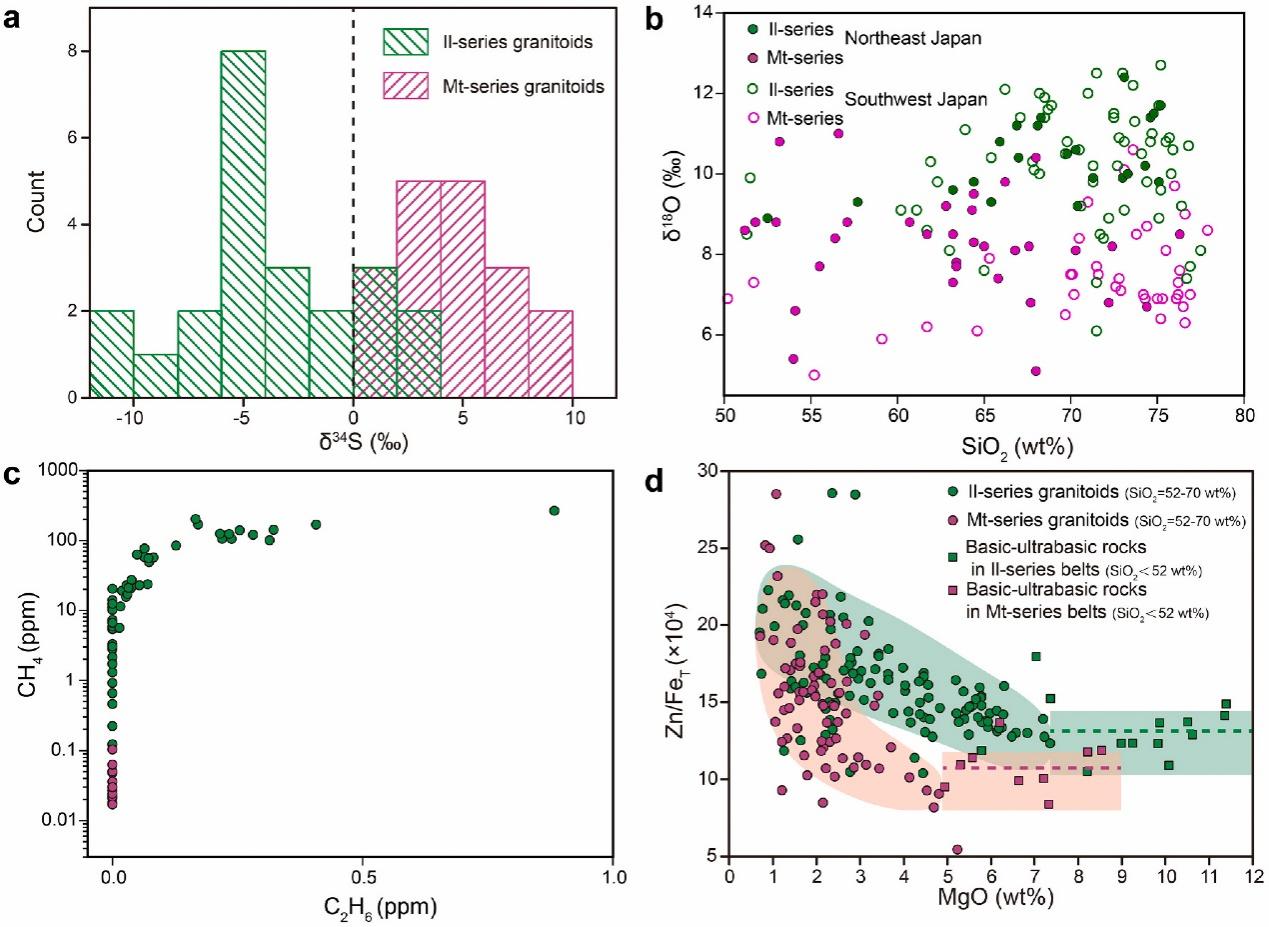Granitoids are classified into magnetite (Mt)-series and ilmenite (Il)-series based on magnetite contents in magmatic rocks. This classification reflects the systematically higher oxygen fugacity of the Mt-series compared to that of the Il-series. Magmatic oxygen fugacity is a key factor in controlling the mineralization type. Therefore, the genesis of these two series of granitoids are important for ore prospection.
In general, the arc magmas are oxidized, forming magnetite-series granitoids. However, there are also ilmenite-series granitoids at convergent margins. The controlling factors on the formation of these two series of granitoids are hotly debated.
Combining the temporal distribution and the geochemical compositions of granitoids in Japan, the research team led by Prof. SUN Weidong at Institute of Oceanology, Chinese Academy of Sciences (IOCAS), presented new insight into the influence of oceanic anoxic events (OAEs) on the formation of Il-series granitoids in Japan. The study was published in Lithos.
Researchers found that the temporal distributions of ilmenite-series granitoids in Japan have a good correlation with OAEs. Specifically, the initial appearance of Il-series granitoids in Japan is almost contemporaneous with OAE 1a. Several OAEs occurred consecutively from 120 Ma to 86 Ma. Consistently, the proportion of Il-series gradually increased in this period. After OAE 3, the proportion of the Mt-series granitoids began to increase, which matches with the OAE gap after 86 Ma.
The OAEs occurred frequently in the Cretaceous, forming large amounts of reducing black shales on the ocean floor. The time consistency between the Il-series granitoids and the OAEs indicates a genetic link between them. The different geochemical compositions between these two series granitoids support this hypothesis.
Compared with the Mt-series granitoids, the Il-series granitoids have lighter S isotope compositions and heavier O isotope compositions, which are similar to the S and O isotope compositions of black shales.
In addition, the Il-series granitoids contain up to several hundred ppm of CH4 and also rare C2H6, while Mt-series granitoids contain almost no CH4 and C2H6. These also indicate that large amounts of organic-rich sediments are involved in the formation of Il-series granitoids.
Moreover, the researchers found that the Zn/FeT ratios of Il-series are higher than those of Mt-series, indicating that the different oxygen fugacity between these two series granitoids came from the magma sources.
Based on above findings, the researchers proposed that these black shales formed during OAEs were subducted into mantle wedge, releasing reducing fluids that lower the oxygen fugacity of mantle and convergent margin magmas, forming Il-series granitoids.
This study was supported by the Strategic Priority Research Program of the Chinese Academy of Sciences, the National Natural Science Foundation of China, etc.

Fig. 1 Temporal distribution of Mt- and Il-series granitoids from Hauterivian to Oligocene in Japan and global OAEs

Fig. 2 Differences in geochemical compositions of Mt- and Il-series granitoids in Japan
Kun Wang, Li-peng Zhang, Jiang-hong Deng, Qing-lin Sui, Guo-zhi Xie, Wei-dong Sun. (2021). The influence of oceanic anoxic events on convergent margin magmas. Lithos, doi.org/10.1016/j.lithos.2021.106529.
WANG Kun
Institute of Oceanology
E-mail: wangkun@qdio.ac.cn
(Editor: ZHANG Yiyi)
|
|

Address: 7 Nanhai Road, Qingdao, Shandong 266071, China
Tel: 86-532-82898902 Fax: 86-532-82898612 E-mail: iocas@qdio.ac.cn


